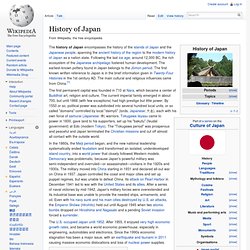

5 Steps To Ordering a Meal in Japan. I live in Japan, but barely speak Japanese. I can’t help you with verb conjugation or passing the JLPT. But I have managed to eat! Restaurants in Japan are a culinary and cultural adventure. Knowing how to act is crucial to speaking the language. They’re also great places to practice many facets of conversational Japanese! So, here are 5 steps to ordering food in Japan. Find a Place to Eat Most foreigners know about sushi and ramen. Yakitori Udon (うどん), a noodle usually served in soupSoba (そば), a thin buckwheat noodle (which is sometimes served cold)Okonomiyaki (お好み焼き), a vegetable-meat-and-egg pancake with a sweet brown sauceYakitori (やきとり), a kebab usually on a stickYakiniku (焼き肉), where you grill your own meat at your tableYakisoba (焼きそば), a stir-fried noodle dish with barbecue sauce and pork You’ll see plastic replicas of the food outside of most restaurants, so even if you can’t read Japanese, you’ll have some idea of what to expect.
The Tale of Genji. How to eat politely in Japan (and other etiquette tips) If you're visiting Japan soon - and the end of August is a great time, with autumn leaves starting to change colour - there are some things you should know first. In this extract from Lonely Planet Magazine (Aug 2010), we give you some starting tips for impressing the locals with your cultural know-how. Eating: Chopsticks in rice. Do not stick your hashi (chopsticks) upright in a bowl of rice. This is how rice is offered to the dead in Buddhist rituals. Shoes: Take your shoes off when entering a private home or anywhere with a tatami floor. Making a payment: In a shop, instead of handing cash to the assistant, place your money on the small tray they keep next to the till. Visiting a shrine: Entering a shrine can be a bewildering experience.
Public baths: Japan: It's Not Funny Anymore. Japanese Designer Store. Things you should know about Japan. : SakuraBranch.com. History of Japan. The history of Japan encompasses the history of the islands of Japan and the Japanese people, spanning the ancient history of the region to the modern history of Japan as a nation state.

Following the last ice age, around 12,000 BC, the rich ecosystem of the Japanese archipelago fostered human development. The earliest-known pottery found in Japan belongs to the Jōmon period. The first known written reference to Japan is in the brief information given in Twenty-Four Histories in the 1st century AD. The main cultural and religious influences came from China.[1] The first permanent capital was founded in 710 at Nara, which became a center of Buddhist art, religion and culture.
In the 1860s, the Meiji period began, and the new national leadership systematically ended feudalism and transformed an isolated, underdeveloped island country, into a world power that closely followed Western models. The U.S. occupied Japan until 1952. Japanese prehistory[edit] Paleolithic Age[edit] Nara period[edit]